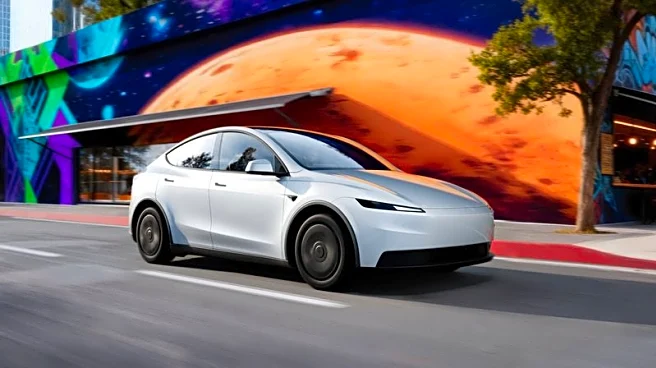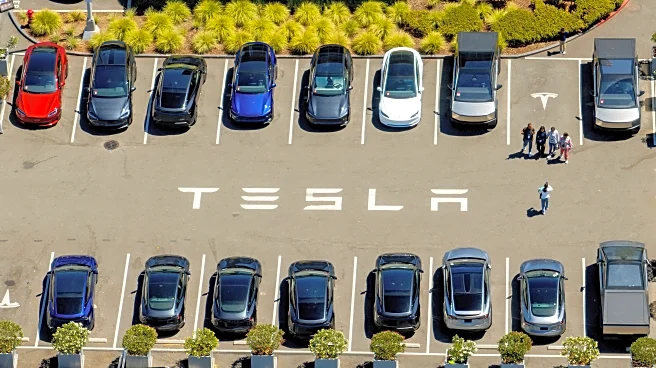What's Happening?
Tesla has reported record vehicle deliveries and revenue for the third quarter of 2025, with 497,099 vehicles delivered and revenue reaching $28.1 billion, surpassing Wall Street forecasts. Despite these
achievements, Tesla's profit margins have been squeezed due to aggressive discounting strategies and higher costs, resulting in a profit miss with adjusted earnings per share of $0.50, below the $0.54 consensus estimate. The stock, which had surged to near 52-week highs, dipped 2% after the earnings release. Analysts remain divided on Tesla's future, with some maintaining bullish price targets while others express caution due to execution risks and the expiration of U.S. EV tax credits.
Why It's Important?
Tesla's performance highlights the challenges of maintaining profitability while pursuing aggressive growth strategies. The company's reliance on tax credits and price cuts to boost sales raises concerns about its ability to sustain growth without these incentives. The mixed analyst views reflect the uncertainty surrounding Tesla's future, particularly as it transitions into an 'AI and robotics' era. Investors are closely watching Tesla's next moves, including the rollout of new models and advancements in autonomous driving technology, which are seen as key to justifying its high valuation.
What's Next?
Tesla's future performance will depend on its ability to navigate the competitive EV market, particularly in the face of challenges such as intense competition from Chinese manufacturers and the end of tax-credit-driven demand. The company's ambitious plans, including the introduction of the Cybertruck and a potential sub-$30,000 Model 2, are expected to drive growth beyond 2025. However, any setbacks in delivery guidance or margin pressures could negatively impact investor sentiment. The market will also be watching Tesla's progress in AI and robotics, which are critical to its long-term success.













